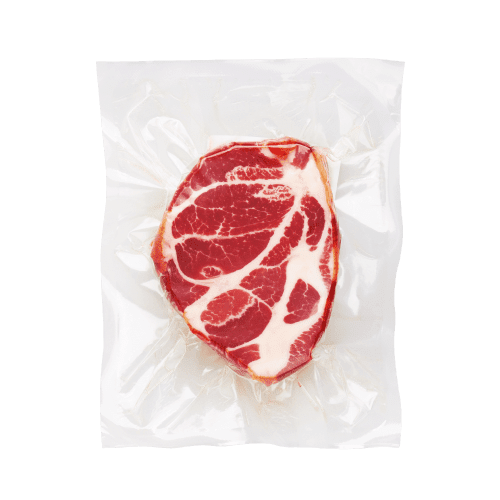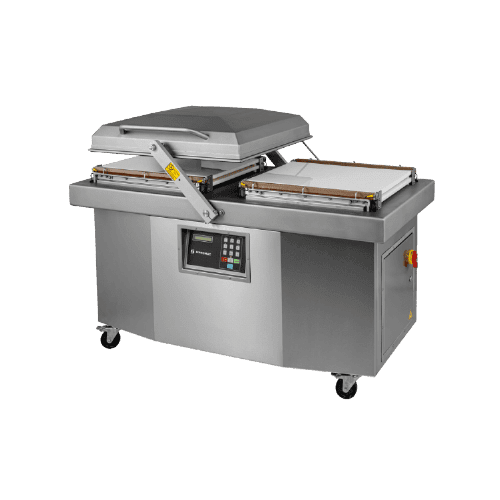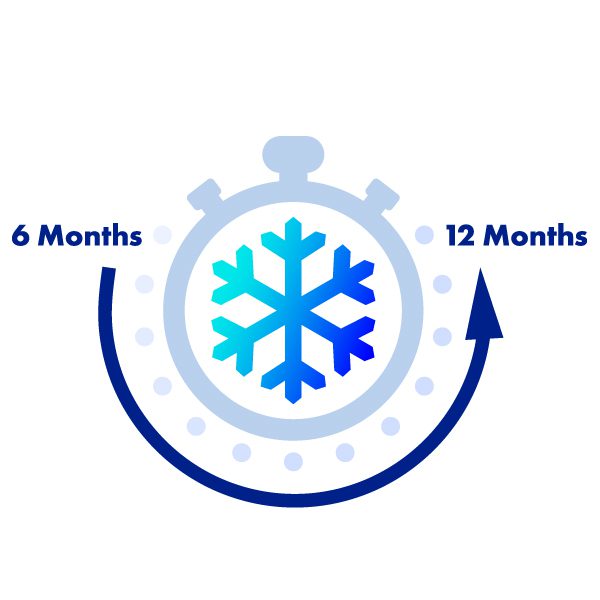Key Considerations for
Frozen Food Packaging
Frozen food packaging is an important component of the frozen food industry. Proper packaging can help ensure the quality and safety of frozen foods, while the wrong packaging can lead to freezer burn, food spoilage, and a shorter shelf life. As a food producer or commercial kitchen, the last thing you want to see is your products discolored and covered in freezer burn before it even gets to consumers.

What materials are commonly used for frozen food packaging?
Frozen food packaging is typically made from materials that are resistant to cold temperatures, moisture, and oxygen.
- Plastic is the most commonly used material for frozen food packaging due to its flexibility, durability, and ability to form a tight seal. Polyethylene, polyester, and nylon are some of the most commonly used plastic materials for flexible frozen food packaging. This type of packaging can be custom printed, and the most common freezer packaging includes 3 side seal bags and stand-up pouches.
- Aluminum foil is often used for frozen food packaging because of its ability to block out light, oxygen, and moisture. Foil is commonly used for packaging frozen vegetables, meat, and fish.
- Paperboard is a type of cardboard that is coated with a thin layer of plastic to make it moisture resistant. Paperboard is commonly used for frozen food packaging for products like frozen pizzas, meats, and baked goods. This option allows for less plastic waste.
How do I properly seal frozen food packaging to prevent freezer burn?
Freezer burn occurs when the cold, dry air of the freezer comes into contact with the surface of frozen food, causing dehydration and oxidation. This can cause discoloration, changes in aromas and textures, and can cause ice crystals to form on food. Here are some tips for properly sealing frozen food packaging:
- Use packaging materials that are designed for freezing. Typically, thicker bags are used because of the low transfer rates for air and moisture.
- Remove as much air as possible from the packaging before sealing. A vacuum sealer can be used to pull 99% of air from the bag to help this process.
- Ensure that the seal is tight and secure. Heat sealers can prevent any air or moisture from entering the packaging, so checking the seal is a valuable step.


What is the recommended storage time for frozen food in its packaging?
The recommended storage time for frozen food varies depending on the type of food and the packaging material used. Some foods will last for 1-3 months, some can be up to a year with optimal quality and freshness. If the product is suitable to stay in the freezer for over a year, a thicker, sturdier material is recommended to prevent freezer burn. Shelf-life testing and consulting a food scientist are the best ways to determine the shelf life of your product.
Wrapping up, frozen food packaging plays a big role in ensuring the quality of frozen food products. By using packaging materials that are designed for freezing, properly sealing the packaging, following recommended storage times, and considering special packaging requirements for specific types of frozen foods, consumers can enjoy delicious and safe food products.
Partager cet article
Have a Project in Mind?
Contactez-nous dès aujourd'hui pour un devis personnalisé.

